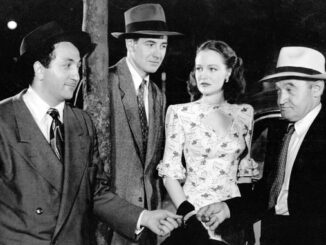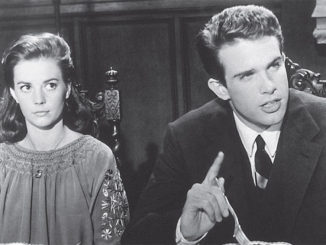
By Holly Sklar
In seventh grade, my classmates were obsessed with “Saturday Night Fever,” Frye boots, and gossiping about who in our grade had a crush on whom. Even my closest friend, once bookish like me, had become obsessed with makeup, boys, and the popular girls. Destined to be a late bloomer, I felt lonely and left out.
One day, hoping to lift my spirits, my mom dragged me to our neighborhood revival house — that was a thing in the pre-streaming era — to see a double feature. The movies that afternoon were two romantic musical fantasies, “Top Hat” and “Swingtime,” in glorious, Art Deco black-and-white, starring Fred Astaire and Ginger Rogers. In the “Star Wars” era, they were like nothing I’d ever seen, lavish, effervescent, witty, and glamorous. They did more than lift my adolescent spirits: they enchanted. The Regency Theater, on 67th and Broadway, became my refuge from feeling like a teenage misfit, and my entrée to history of Hollywood films. By the time I was a high school senior, I’d filled a 3×5 file-card box with capsule reviews of classics.
At college, my movie education broadened to include indie and foreign films, thanks to the expansive tastes of my fellow film geeks in the Brown University Film Society. Once a week, for four years, my crew and I would haul 16mm movie projectors to lecture halls, put CinemaScope lenses on them, and change reels. Sometime during these years, watching others’ stories on screen became insufficient: I wanted to tell my own.
I wrote a play and then a musical, both produced by student theater groups. I took intro filmmaking one summer at NYU. I interned at Columbia Pictures’ Manhattan publicity department. The most creative thing I was allowed to do was write movie press kits … but I was in the business! Spotting my apparent ability to succinctly summarize a movie’s story, my boss suggested I pursue work in a movie studio’s story department, writing coverage: synopsizing submitted scripts and books, and evaluating their movie potential.
It would be some years before I followed his advice. Like many a future story analyst, screenwriting was my dream. I was sure I’d achieve it if I wrote enough scripts and honed my craft. I got a job editing and producing audio books, which brought me to Los Angeles. Abridging books taught me economical storytelling, forcing me to cut a story down to its essence. A stint copy editing at a music trade magazine taught me to write attention-grabbing hooks. But I felt far removed from the movie business.
I decided to get a job closer to script development. Through friends, I got my hands on sample script coverage and wrote my own, fine-tuned with feedback. I wrote blind letters, made phone calls, and networked like crazy to get my samples read. Soon I was a freelance script reader, and parlayed one client into another. I read for TV networks (NBC, CBS), directors with deals (e.g., James Cameron), production companies, and talent agents, churning out reliable, quality work. I got fast. I got good. I liked it.
Within a year, I’d landed my first union story analyst gig, at MGM. It may not have been the career I’d set my sights on, but its focus was the same: storytelling for the screen. I was asked to sit in on development meetings with executives and writers, trusted to synthesize the creative discussion and turn it into “notes” to guide the writers’ revisions. I became an executive favorite, project after project landing in my lap.
Less than two years later, I left to be Director of Development at the Ladd Company. I wrote the notes on every project, helping to develop some that got made (the “Brady Bunch” movies), and tweaking others in post (if you thought “Braveheart” was long, you shoulda seen the director’s cut!). I finally left to give screenwriting a “full-time go” as a screenwriter, sold my first project, and thought I had it made. But a good year would be followed by a not-so-good one. Projects were optioned but not made, or died in development hell, leaving me unsatisfied. I grew to miss having a hand in work that did land on movie screens. Recently married and wanting to start a family, I also wanted a steady job that might allow for work-life balance.
I put myself on the union available list. Almost immediately, I got work at Disney, and a month later, was snatched away by Warner Bros. Come April ’22, I’ll have been there 20 years. Each day, I’m trusted to communicate the essentials of a story, assess whether it can be made into a satisfying, commercial product, and suggest how to do so. I feel lucky to be earning my keep as a Local 700 story analyst. One long ago afternoon, I fell for the movies. I’m still very much in love.
Holly Sklar is a story analyst at Warner Bros. Pictures. Following in the footsteps of her grandfather, who was actively involved in organizing insurance workers, Holly is a Local 700 Board Member-at-large and co-founder of the Story Analyst Working Group (open to all Local 700 story analysts). She can be reached at hasklar@aol.com.





